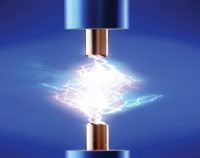Systems Failure Anatomy of a Blackout: 6 PDH
$36.00
This is an online course that gives detailed description of the electrical system blackout that happened August 14th, 2003. This was one of the largest blackouts in US history, that affected more than 150 million people. This course will cover the conditions prior to the start of the blackout sequence, conditions prior to the start of the blackout sequence, casual events leading to the power system cascade, and the cascading failure of the power system.
SPECIFIC KNOWLEDGE OR SKILL OBTAINED
This course teaches the following specific knowledge and skills:
- Know what happened, why it happened, and what can be done to minimize future outages
- Learn about power system operations, the planning, design, protection and control
CERTIFICATE OF COMPLETION
You will be able to immediately print a certificate of completion after passing a 20 question multiple-choice quiz. The quiz can be retaken unlimited times until a passing grade of 70% or better is earned. This course satisfies 6 professional development hours (PDH) of continuing education.
Related Courses
2017 NEC Significant Code Changes Part 3: 4 PDH
$24.00 Add to cartPart 3 of a multiple part series, this four (4) hour course covers and highlights some of the significant changes and updates in the 2017 Edition of NFPA 70: National Electrical Code (NEC) which was recently updated from the 2014 Edition of NFPA 70: National Electrical Code (NEC). The student will progress through all of article 500. The student will be identifying chapters, articles, and tables of where and what significant changes occurred (be it an addition, revision, or deleting), the student will review the 2017 version of the updated text, and understand the reason for the change with an explanatory brief.Instructor: Juan Pesante, PESPECIFIC KNOWLEDGE OR SKILL OBTAINED
This course teaches the following specific knowledge and skills:
- Become familiar with some of the significant changes including additions, deletions, and modification to the 2017 Edition of NFPA 70: National Electrical Code (NEC) from the 2014 Edition for chapter 5
- Comprehend, after reviewing the significant changes and additions to the 2017 Edition of NFPA 70: National Electrical Code (NEC) the large scope of the changes to the code, thereby seeking additional and more thorough reviews of the entire code,
CERTIFICATE OF COMPLETION
You will be able to immediately print a certificate of completion after passing a 20 question multiple-choice quiz. The quiz can be retaken unlimited times until a passing grade of 70% or better is earned. This course satisfies four (4) professional development hour (PDH) of continuing education.
Preview CourseClick “Preview Course” to View Prior to PurchaseClick “Add to Cart” to Purchase and Access QuizMicroturbine Generators: 1 PDH
$6.00 Add to cartIn this online course a student will understand microturbine generators, how they work, their performance characteristics, and what applications can benefit from this combined power & heat technology. Instructor: Juan Pesante, PESPECIFIC KNOWLEDGE OR SKILL OBTAINED
This course teaches the following specific knowledge and skills:
- Explain what microturbines are and how they function
- Discuss the basics components of microturbines
- Discuss part-load performance
- Explain effects of ambient conditions on performance
- Understand microturbine capital costs
- Discuss suitable applications for microturbines
CERTIFICATE OF COMPLETION
You will be able to immediately print a certificate of completion after passing a ten (10) question multiple-choice quiz. The quiz can be retaken unlimited times until a passing grade of 70% or better is earned. This course satisfies one (1) continuing education hour (CEH)/professional development hour (PDH) of continuing education.
Preview CourseClick” Preview Course” to View Prior to PurchaseClick “Add to Cart” to Purchase and Access Quiz




